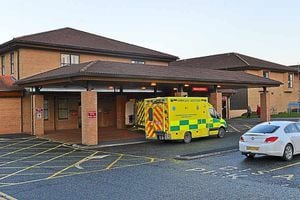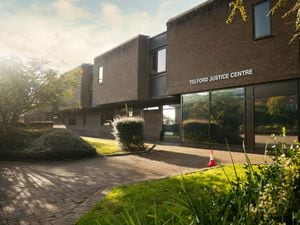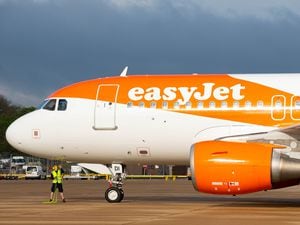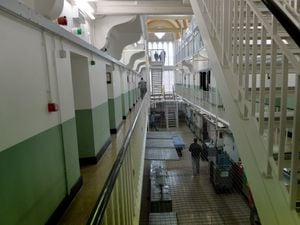Half of all ambulances at Telford's Princess Royal Hospital and Shrewsbury Royal Hospital wait more than 30 minutes
Half of all ambulances arriving at Shropshire's two main hospitals are being forced to wait more than 30 minutes, figures released today reveal.

Nearly 3,000 ambulance crews waited longer than 30 minutes outside both Telford's Princess Royal Hospital and Shrewsbury Royal Hospital.
That accounts for an average of 25 ambulances a day experiencing delays at each hospital.
Paramedics are supposed to drop people off and get back on the road within 15 minutes of arrival at a hospital.
But pressures on Shropshire main emergency departments have meant ambulances have been tied up for longer.
Figures obtained by the Shropshire Star under the Freedom of Information Act reveal 2,819 ambulances waited outside PRH and RSH for more than 30 minutes between January and February this year.
That meant that a total of 745 hours were lost at both hospital during that period, according to the figures.
From March 2015 to February 2016 the hours lost at hospital has more than doubled.
The last three months has been a particularly busy time for hospitals, with an increase in demand from patients, many of whom were elderly and need a lot of care.
January 2016 was the busiest month in the last year at PRH, with 830 ambulances waiting for longer than the 30 minute turnaround target. For RSH, last month was the busiest month, with 612 ambulances waiting for longer than 30 minutes.
Chris Kowalik, of West Midlands Ambulance Service, said: "The trust has seen an increase in delays handing patients over to both hospitals.
"Delays such as these mean that if ambulances have to wait to offload patients, they are then not available to respond to other 999 calls.
"The trust continues to work closely with the Shrewsbury and Telford Hospital NHS Trust to find solutions to the delays in patient handover."
Simon Wright, chief executive at The Shrewsbury and Telford Hospital NHS Trust, said ambulance arrivals at Shropshire's A&E departments has increased by nearly 13 per cent in the last year.
He said: "Both our A&E staff and local ambulance teams have been working hard to ensure patients are seen by our A&E staff as quickly as possible so they can reach the next stage of their care or be discharged in a timely fashion.
"However, it's been well reported that the NHS, both nationally and locally, has been incredibly busy in recent months.
"We've seen a 15 per cent increase in attendances at our A&E departments which is a significant figure, as our attendance levels over the course of a year are in excess of 100,000 people.
"With the support of our commissioners we've made improvements, such as the introduction of additional nurses to accept and support patients. This is better for patients and allows ambulance crews to return to the road more quickly.
"Around 50 per cent of patients brought into our A&E departments by ambulance need to be admitted for further care.
"We're working to ensure the remaining patients who don't need to be admitted are taken to the most appropriate place to be seen or treated rather than face an unnecessary trip to A&E.
"We know that too many people are attending hospital for urgent care when there may be somewhere more appropriate, and of those who need to be admitted, too many are facing delays before they can be discharged from hospital to allow them to return home or move into a more appropriate care setting.
"The trust is working with the national Emergency Care Improvement Programme (ECIP) and is also building on learning from our partnership with the Virginia Mason Institute in Seattle as well as from other acute trusts in England to ensure all opportunities for improvement are being taken.
"We will continue to work hard with partner organisations, including West Midlands Ambulance Service, to reduce delays for ambulance crews."





